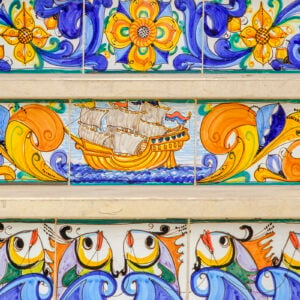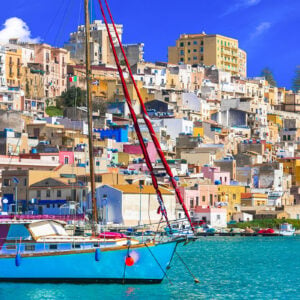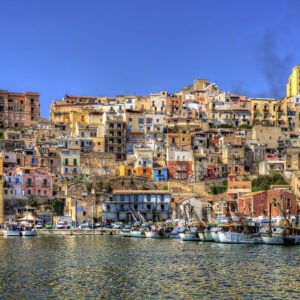Visit Sciacca and discover the city of ceramics
A beautiful seaside village, where the colourful buildings are reflected on the sea. Sciacca was founded in the 6th century BC as a spa facility dependent on nearby Selinunte. The particular urban planning that still distinguishes the city is due to the Arabs, who built the walls around the neighbourhoods, and to the Normans, who expanded the city walls allowing for the coexistence of Arabs, Franks and Greeks – it is no coincidence that the ancient presence of these three ethnic groups has left significant traces throughout the territory.
If you visit this city in February, don’t miss one of the best Carnivals in Sicily.
Here are the must-see attractions:
Don’t miss
Luna Castle
It is located in the ancient city walls and the remains are still visible: the keep, the count’s palace, and the cylindrical tower. It is one of the places where the famous “Sciacca case” was carried out: the bloody fight between the Luna (Catalans) and the Perollo (Normans).
The tree of the legend
A centuries-old tree that grows about 8km from Sciacca. Beware of picking the olives because according to popular belief it is possible only to pick the olives up that have fallen to the ground, otherwise you will be struck by misfortune.
Spiaggia della tonnara
The coast of Sciacca is a succession of golden sand sands and a crystal-clear sea. A beach within walking distance of the old town is the Tonnara beach, a great compromise between beautiful sea and shops and amenities at your fingertips.
Casa Museo del Sapone
A sweet-smelling museum built inside a restored rural building. The guided tour traces the millennial history of soap and provides information on production techniques. At the end of the visit you have the opportunity to try the hand-crafted products.
Palazzo Steripinto
Also called “Testa di Corsa” it’s an elegant 16th-century stately home whose facade is decorated with diamond-shaped ashlars. The decorations all together take on different shades in the sunlight.






